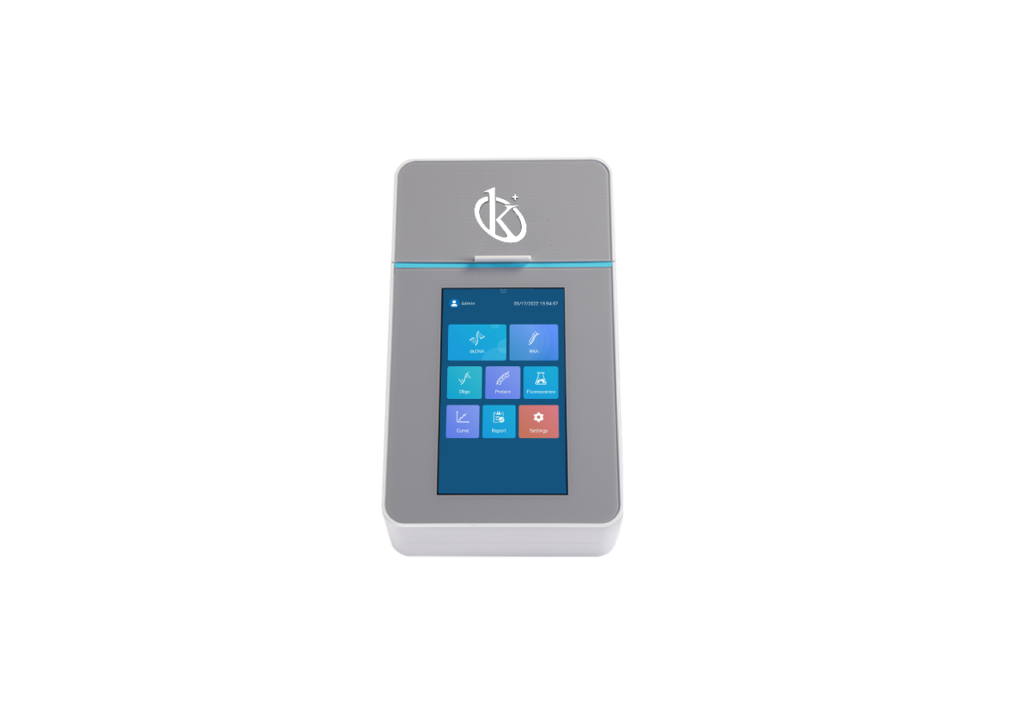By measuring the intensity, spectrum, lifetime and polarization of fluorescence, we can determine the presence and concentration of fluorophores. The equipment used is called a fluorometer, an analytical instrument designed to determine the concentration of fluorescent compounds.
The analysis technique is called fluorometry, and is widely accepted in the scientific field as a valuable and powerful analytical tool, for both quantitative and qualitative analysis. It is a sensitive optical emission technique, which involves exciting sample molecules with a photon source. Fluorometry is still under study, but modern instruments offer many advantages that facilitate data collection. It is generally used if there is no sufficiently sensitive or selective colorimetric method for the substance to be determined.
Advantages of using a fluorometer
- Sensitivity: most analytes allow a detection rate of parts per trillion, with the detection limit largely dependent on the sample being measured. This feature enables detection using small sample quantities. Due to its high sensitivity, fluorometry is used to quantify DNA, RNA and PCR, to detect DNA contamination in drugs and to perform vitamin tests for pharmaceutical procedures.
- Specificity: fluorometers are highly specific because it is the target compounds that absorb and emit light, and are therefore less likely to interfere with other aggregates present in the sample. This instrument can be used to identify the presence and quantity of specific molecules in a medium.
- Linearity in the concentration range: Fluorescence intensity is generally directly proportional to absorber concentration. Concentrations of unknowns can be quantified mathematically in relation to the fluorescent intensity of known biomolecules in the assay. Modern fluorometers can detect concentrations of fluorescent molecules as low as 1 ppt, the operational wavelength range of the fluorometer depends on the requirements of the experiment.
- Simplicity and speed of response: the fluorometer’s sensitivity and specificity mean that experimental protocols for sample preparation, which are rigorous for other analysis methods, can be reduced. For this reason, fluorometry is a relatively straightforward analytical technique, enabling simple, practical and rapid analysis.
- Economical: costs associated with reagents and instrumentation are low compared to other analysis techniques. Fluorometry is a powerful technique used for a variety of environmental, industrial, diagnostic, DNA sequencing, forensic, genetic and biotechnological applications. The fluorometer is a device that can be found in a variety of presentations to meet specific research requirements.
Filter Fluorometers
The device has an excitation source, filters, sample cells and fluorescence detectors. Filter fluorometers are configured as a single beam, with source intensity control to reduce the effects of fluctuations on detector response. These sources can produce intense 254 nm radiation, the most common light source being xenon arc lamps. The excitation wavelength is selected by inserting a primary filter in the incident beam to obtain a spectrum with good spectral purity.
The filter fluorometer is a good choice when sensitive quantitative measurements are required for specific compounds. This instrument provides a relative measurement and can be calibrated using a known concentration standard or correlated with other laboratory methods. Modern microprocessor-based instruments offer numerous possibilities for data manipulation via software. They include options for data processing and display, blank signal subtraction, derived spectra, spectrum filtering, peak detection, parameter statistics.
The YR412-A series fluorometer has a 260 nm LED light source, linear dynamic range of 0.995, photodiode detector and 0.5ng/ml sensitivity. It’s a lightweight piece of equipment that offers practicality and versatility for laboratory work. For more information on our products, BUY or SELL, visit our website: HERE

